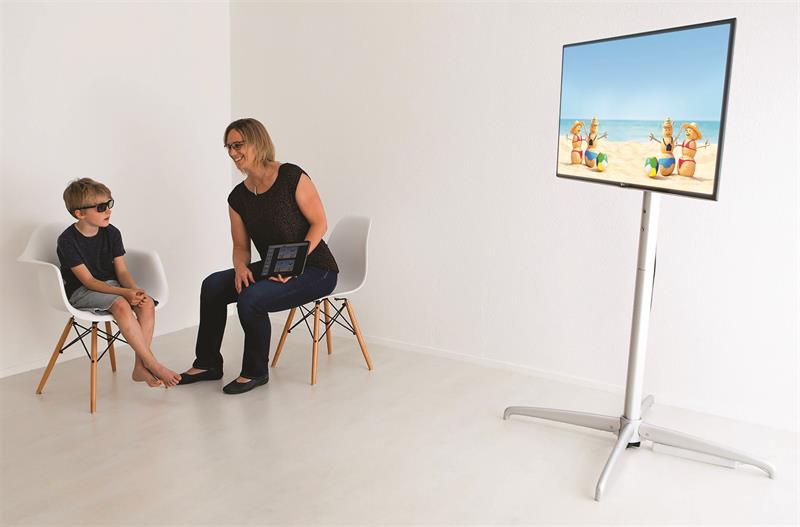
‘During the pandemic, children’s eye examinations were put on hold in Northern Ireland completely, especially in the first 12 to 14 weeks,’ Mark Mackey tells Optician.
The optometrist and co-owner of Mackey Opticians shares that his Belfast-based practice provided like-for-like replacement spectacles to children for breakages or losses, which were organised by phone.
‘We were fortunate that our main supplier, Hoya, operated throughout the pandemic and we had one of our three glazing lab technicians working on a part-time basis throughout, especially in the first few weeks,’ he explains.
With most practice staff furloughed, the four director optometrists covered all 13 practices for an hour or two a day depending on where the emergencies were. ‘We saw a few children with eye problems over the period, mainly conjunctivitis which could sometimes be diagnosed and managed remotely over the phone with photographs emailed through or viewed on FaceTime. The vast majority of emergencies were adults as our local eye casualty moved to appointment or referral only and we got to see a much wider raft of pathology as a result.’
Mackey says dispensing was made possible again once personal protective equipment (PPE) became available. He saw children whose frames no longer fit or because they had difficulty obtaining the same frame as before. ‘I had a 13-month-old girl’s parent phone up about the onset of a marked esotropia. Initially, I was advised we weren’t allowed to see the girl but eventually we were allowed to test her in mid-June and found her to be +6.50DS in both eyes, post-cycloplegic and she was dispensed with two pairs of Tomato frames. At present, we are still only allowed to see children with visual or eye health problems,’ Mackey explains.
Patient flow
Mackey says he is lucky that he has spacious practices so social distancing has been implemented with relative ease and he has been scheduling eye examinations to manage the number of patients in practice at one time. PPE has been donned as recommended and disinfection of hard surfaces between patients has become part of the new routine. He explains: ‘We have tried minimising the number of people coming into the practices, although children obviously need a guardian or parent with them. Most children are happy to wear masks and haven’t been scared by the wearing of PPE. Sometimes I don’t wear disposable gloves with some children, especially autistic children, preferring to use meticulous hand hygiene instead. However, this has been rare so far.’
Before an appointment, an optical assistant will phone a parent and ask about any Covid-19 symptoms in order to screen potentially infectious patients. ‘Parents are then advised of the need for social distancing and the limit on numbers within the practice, the importance of appointment times and the need for numbers attending to be as few as possible, which normally means asking other children to stay at home instead of them all coming in as usual,’ Mackey explains.
Books, play areas and toys have been removed to limit potential infection spread, although toys that are relied on during testing have been kept, but only the ones that can be sprayed and cleaned. ‘Parents are also told about us wearing PPE, the need to bring a mask for older children at least and also hand sanitising on arrival,’ Mackey says. He adds that it is hard to know if children find PPE scary and hopes that, as children seem to be at less risk of the disease than adults, there will be advice in the future that masks are not as necessary for children as they are for adults, especially vulnerable patients.
Attention grabbing
In the testing room, Mackey uses the Paskal 3D refraction system to engage children during the eye examination. He says children are automatically drawn to the colourful displays on the TV and often opts for a beach or lake scene. ‘The children’s app has a mad looking squirrel that jumps around holding various objects and parents can also join in telling the child where to look,’ he explains. Mackey also takes advantage of being able to switch to YouTube on the TV and show children part of a Peppa Pig episode about eye examinations. Mackey usually starts the exam by grabbing children’s attention with the device’s 3D function, although he admits it works just as well with adults.
Mackey says: ‘Vision can be measured using Kay Pictures, Snellen, a Logmar style chart, numbers, Es and landolt rings. You can use a test chart type background, three lines, single lines or single letters in the regular set-up and also a single vertical line of letters in the children’s app. The letters change between eyes or at the touch of a button so there is no learning of the letters and the background is in 3D with balloons or beachballs or sand-people to keep their interest. It is very easy for an optometrist to programme their own preferred set of plates to use throughout the tests and in whatever order they prefer.

‘Children respond much better to using filters in the children’s trial frame – now “sunglasses” – rather than using an occluder to cover one eye when measuring vision and acuities. Covering one eye often invokes a poor response but with Paskal 3D they are often unaware that they have even switched between eyes. You may need an occluder lens with strabismus patients if they don’t automatically switch over,’ he explains.
